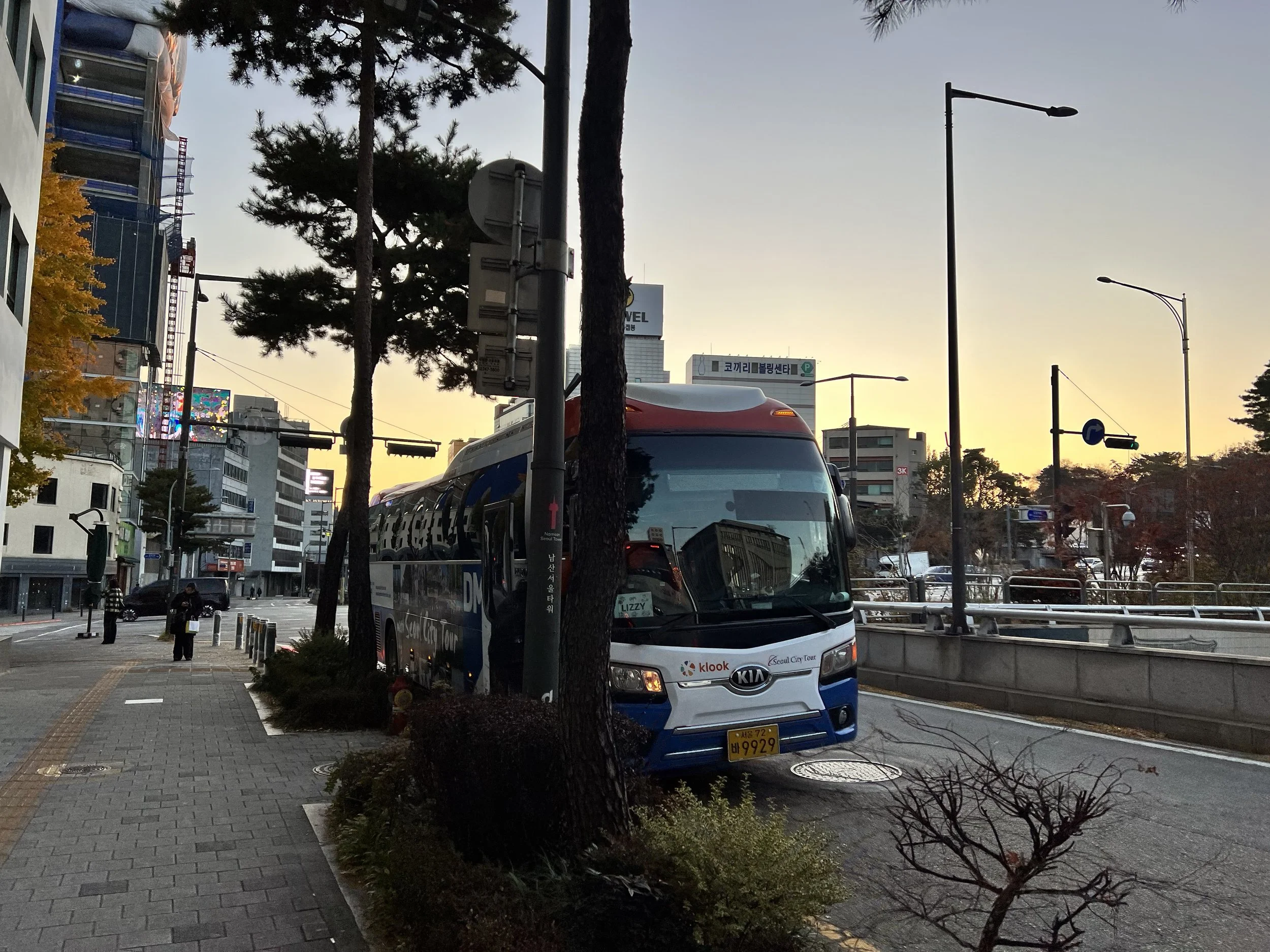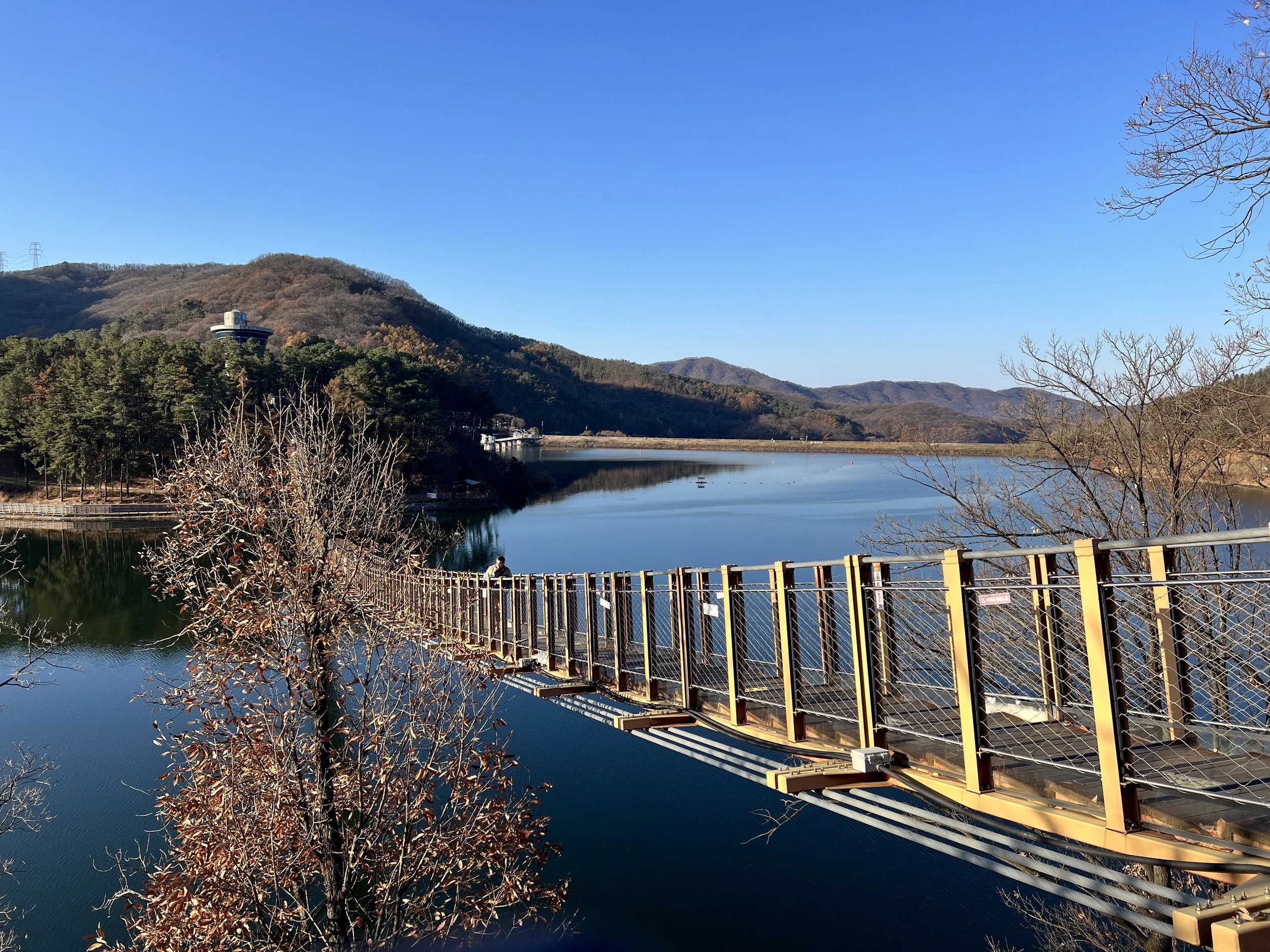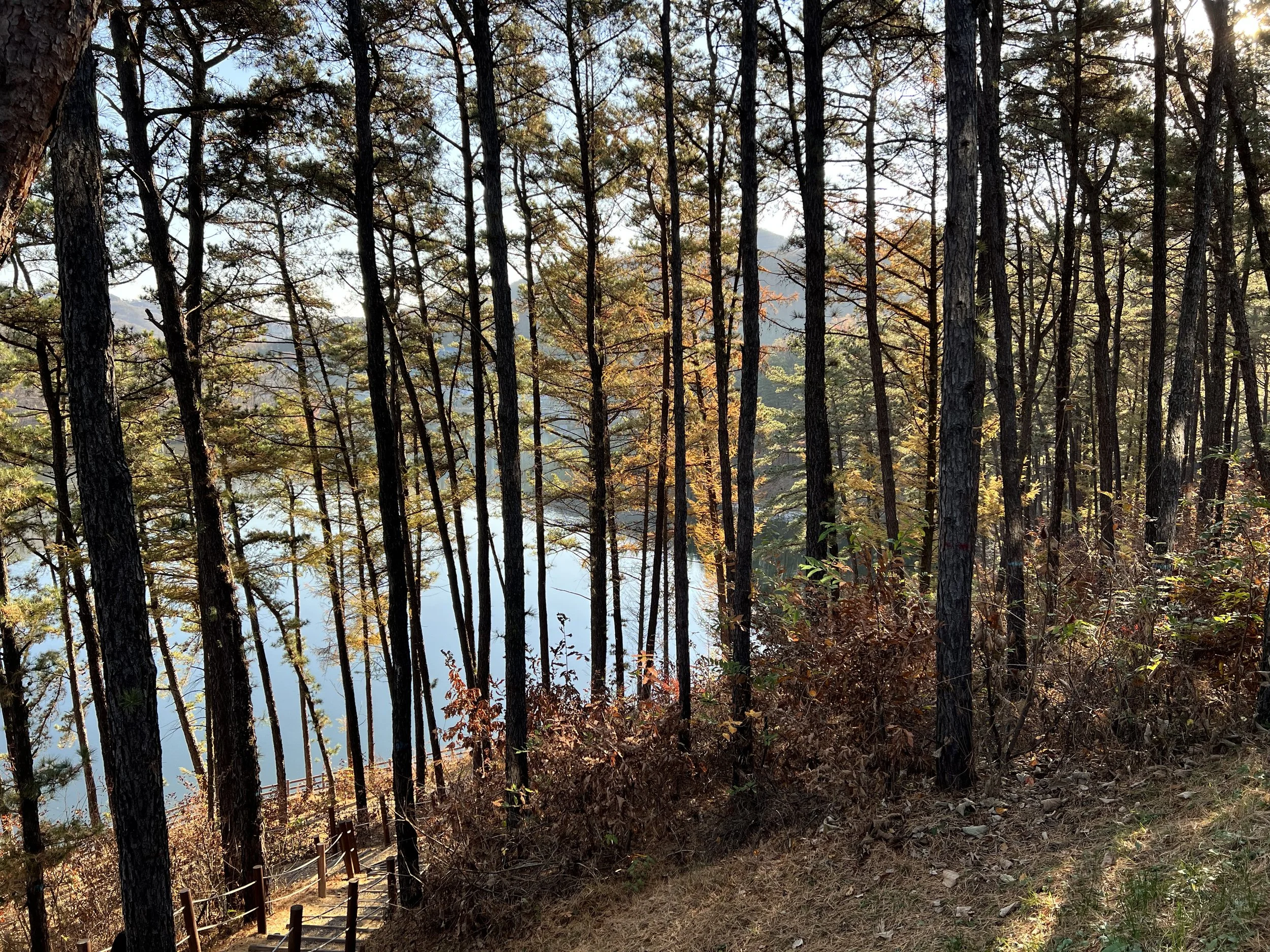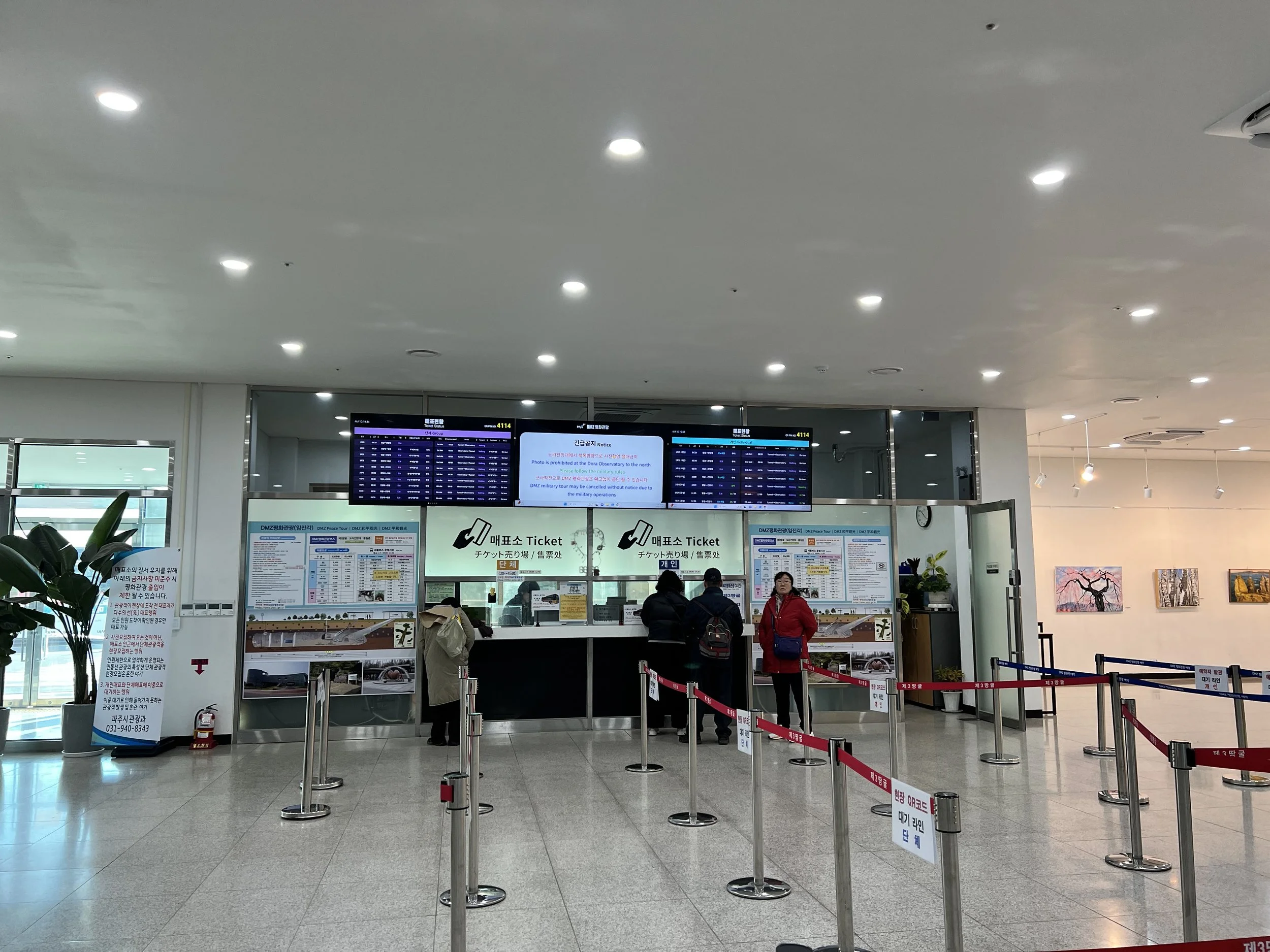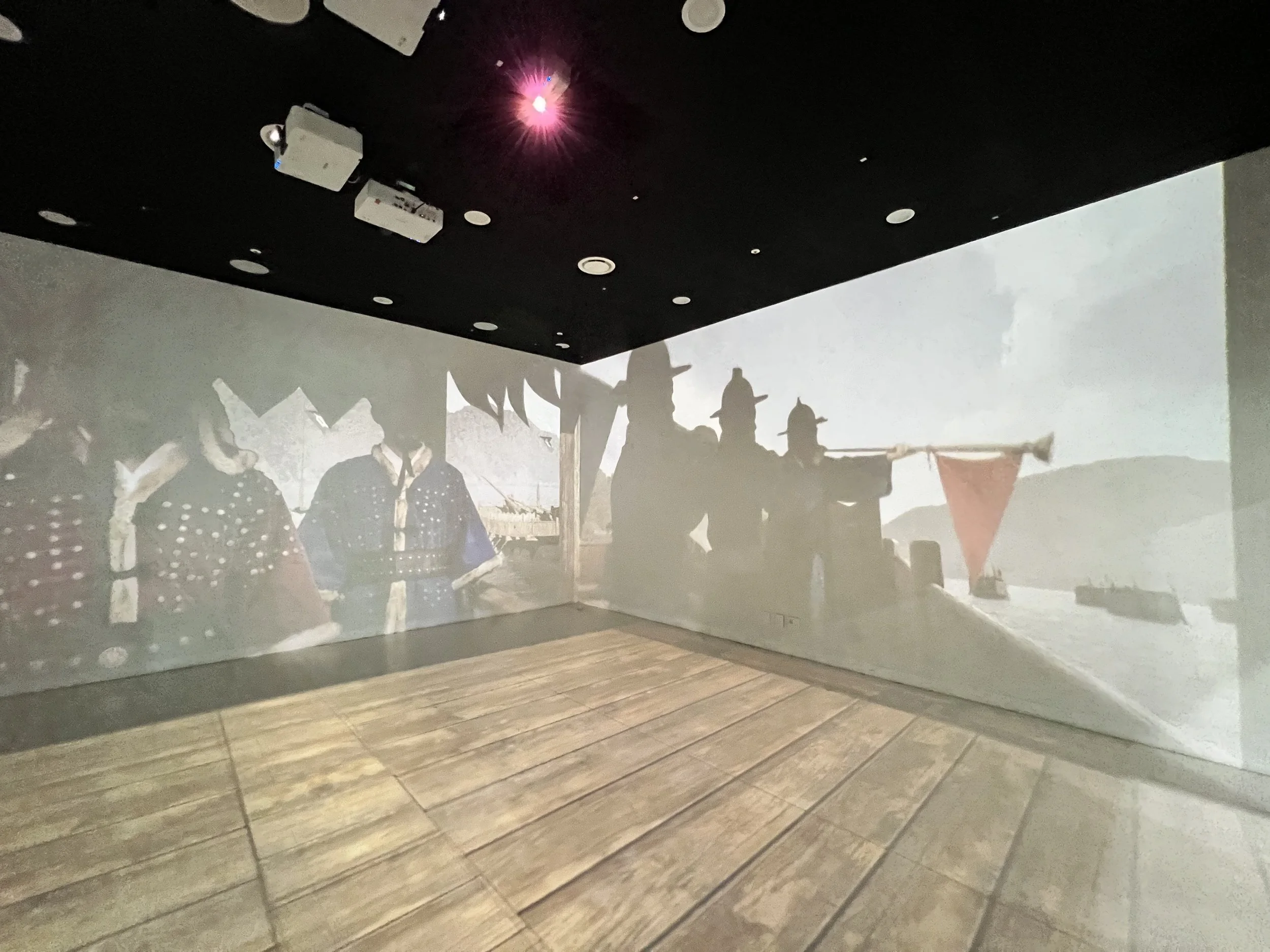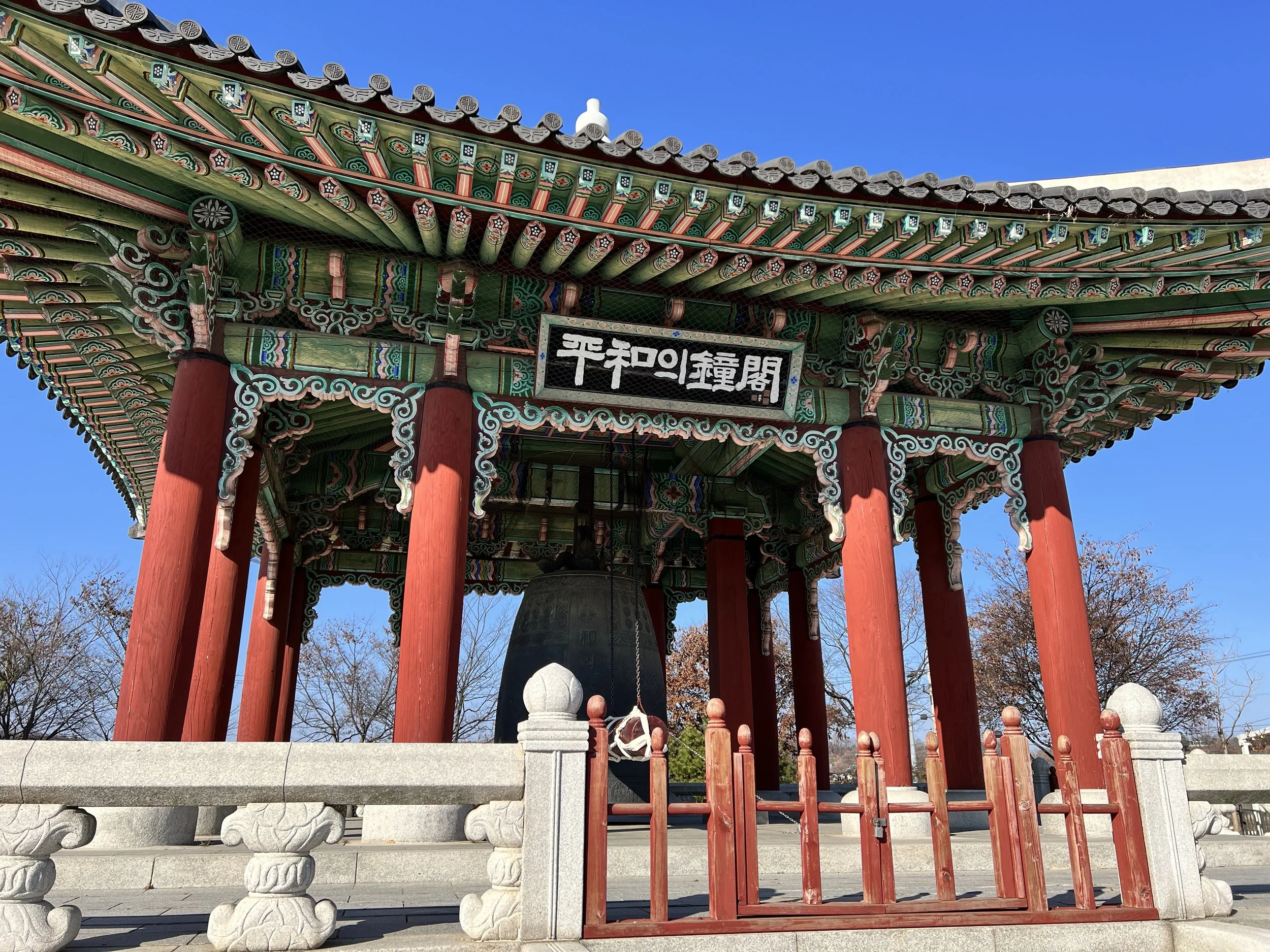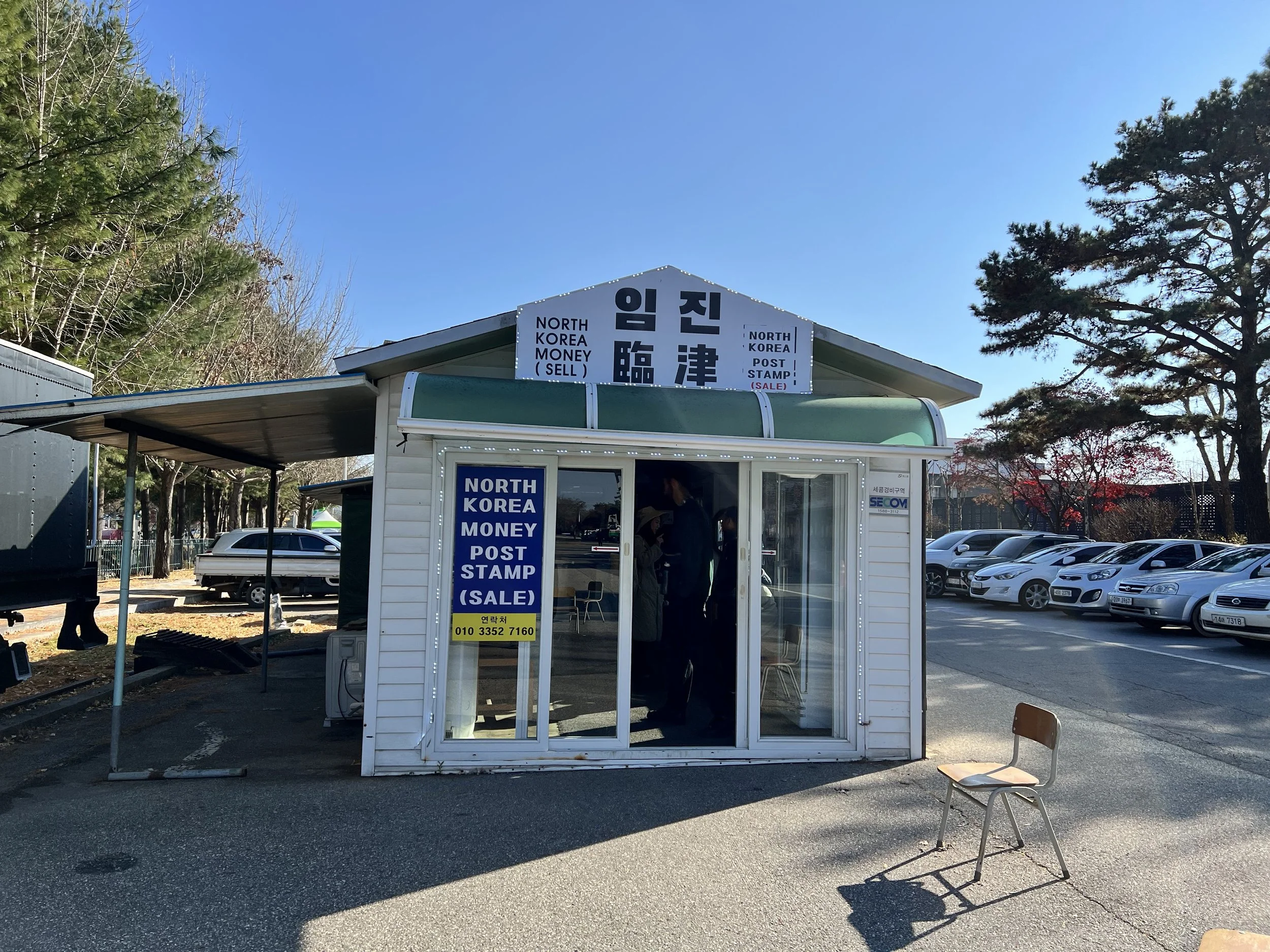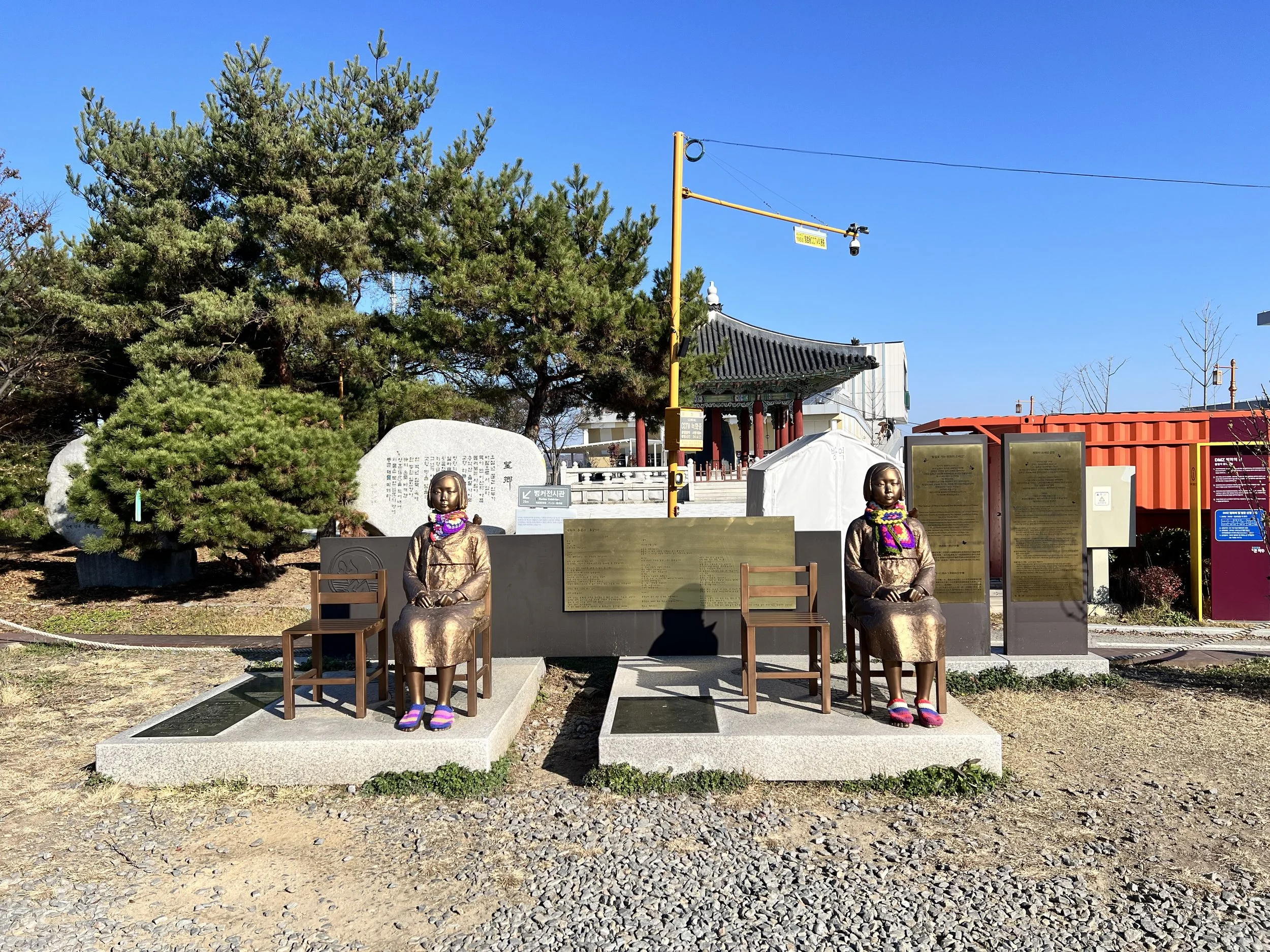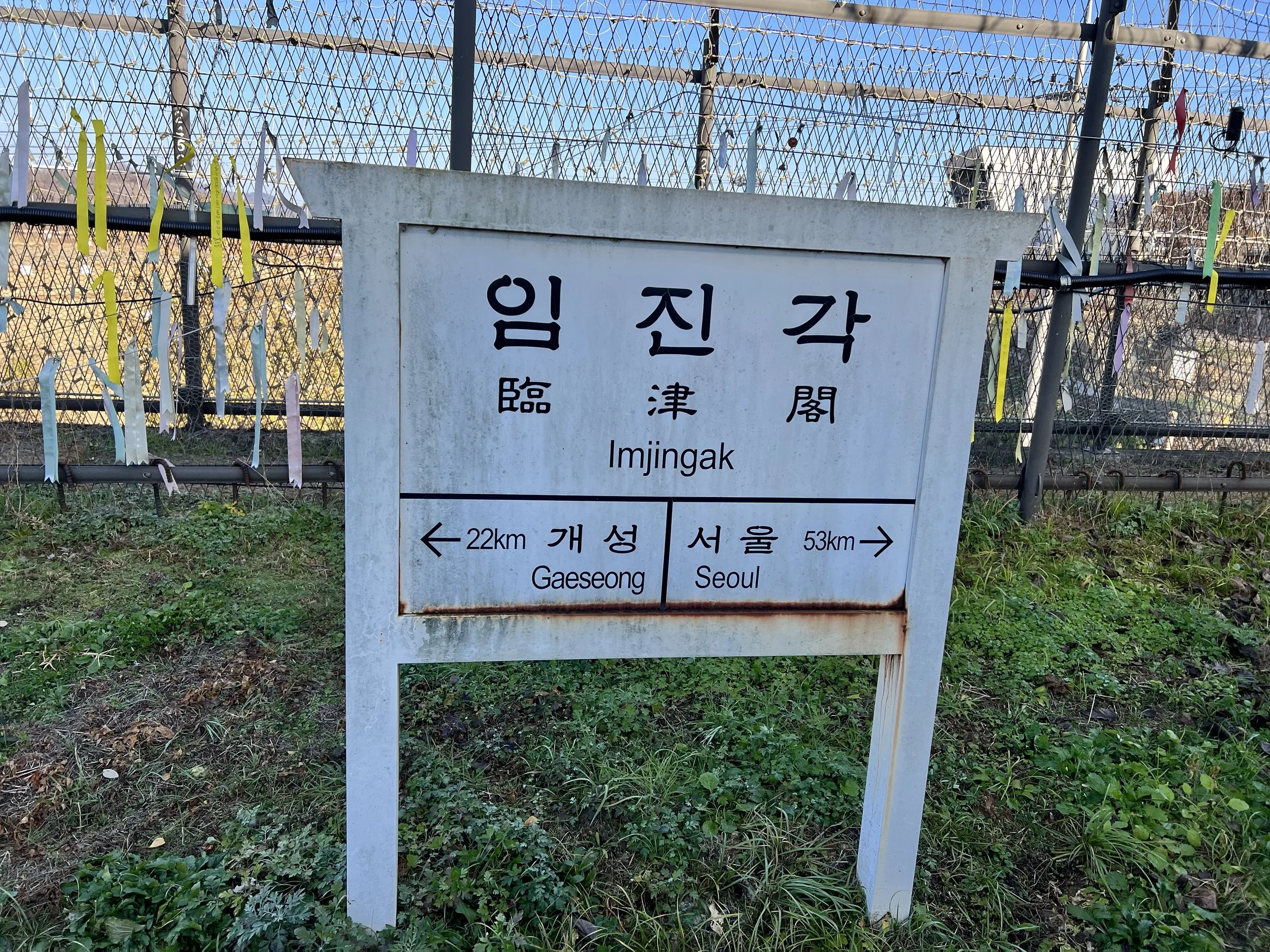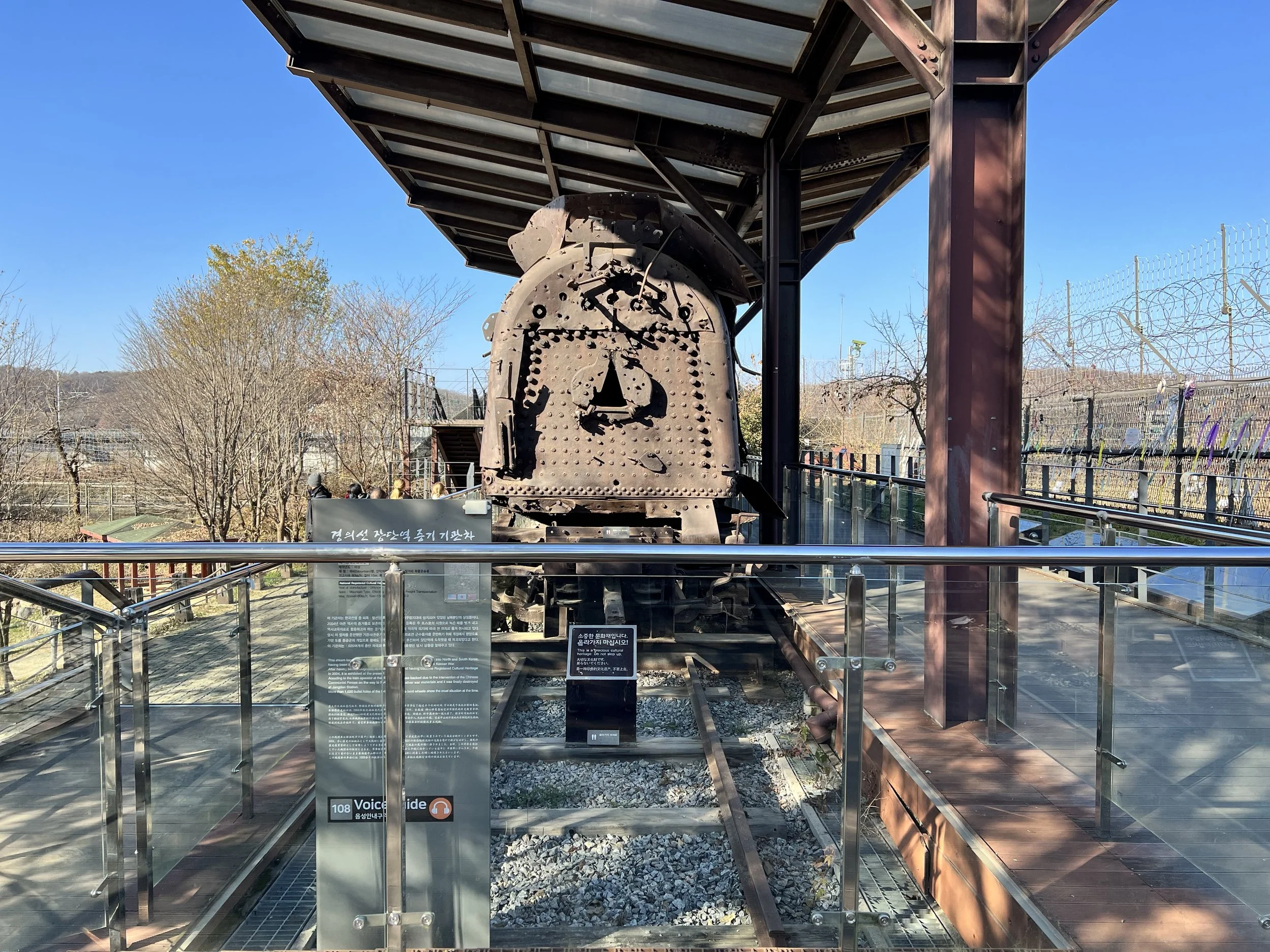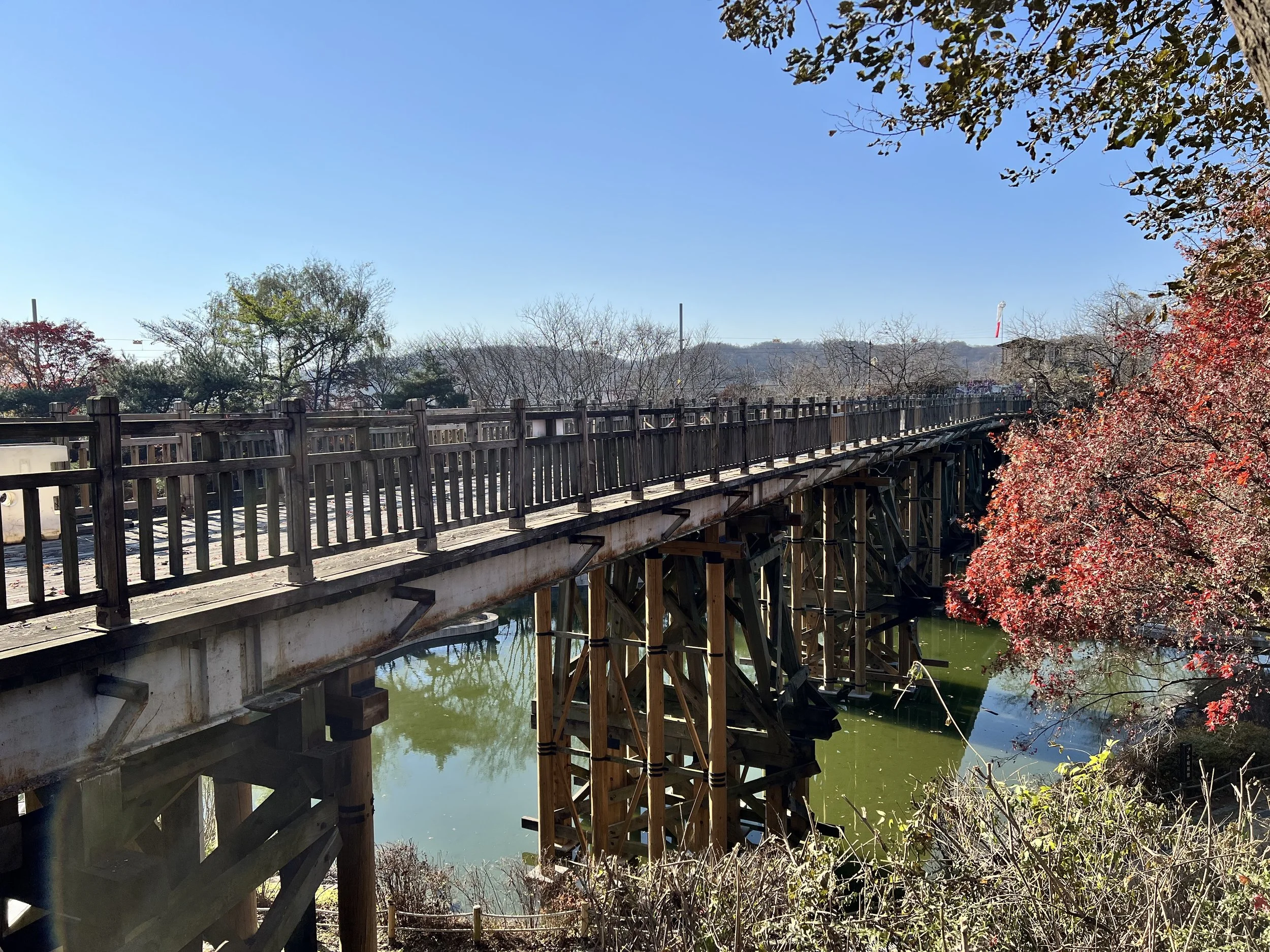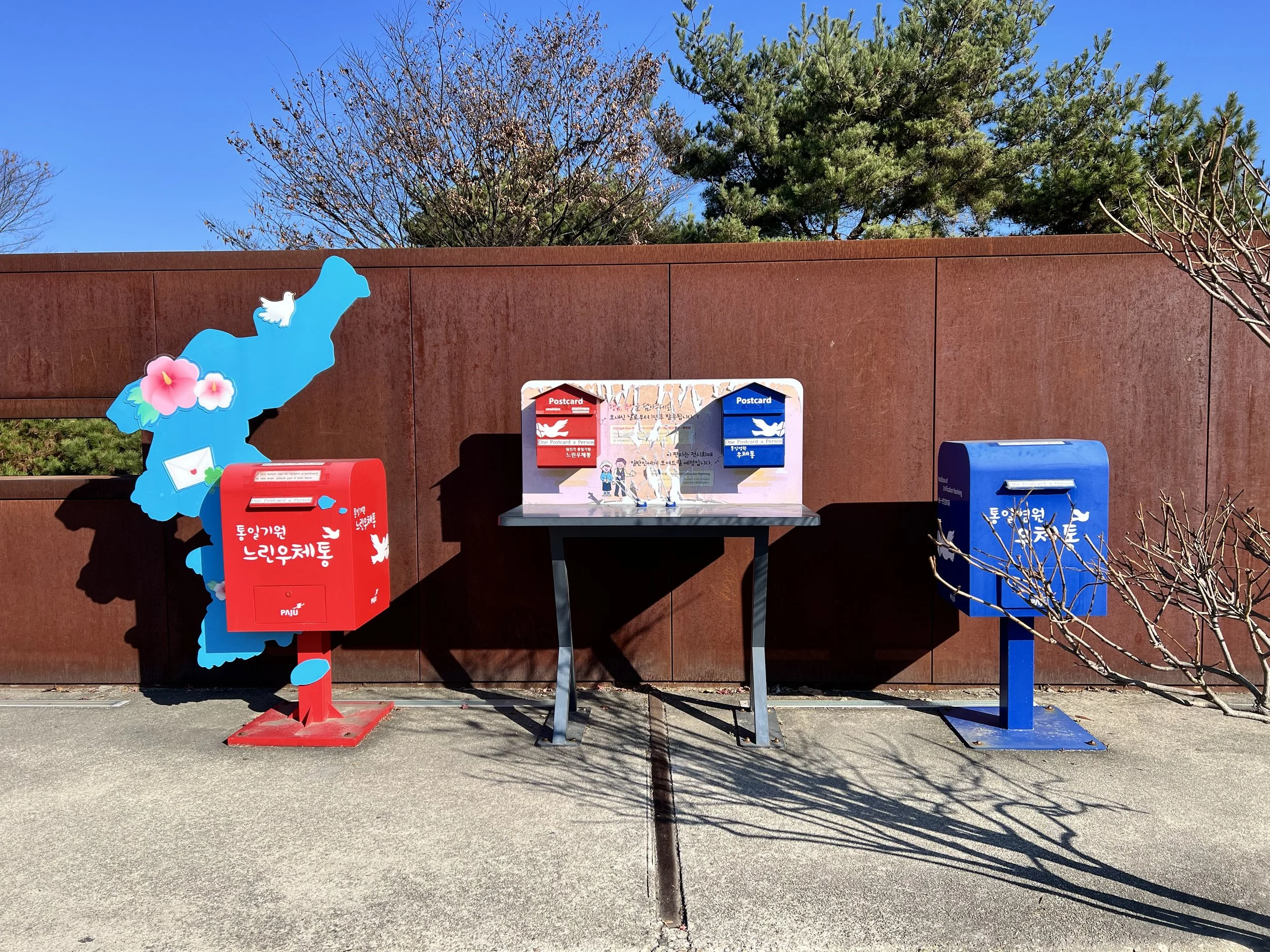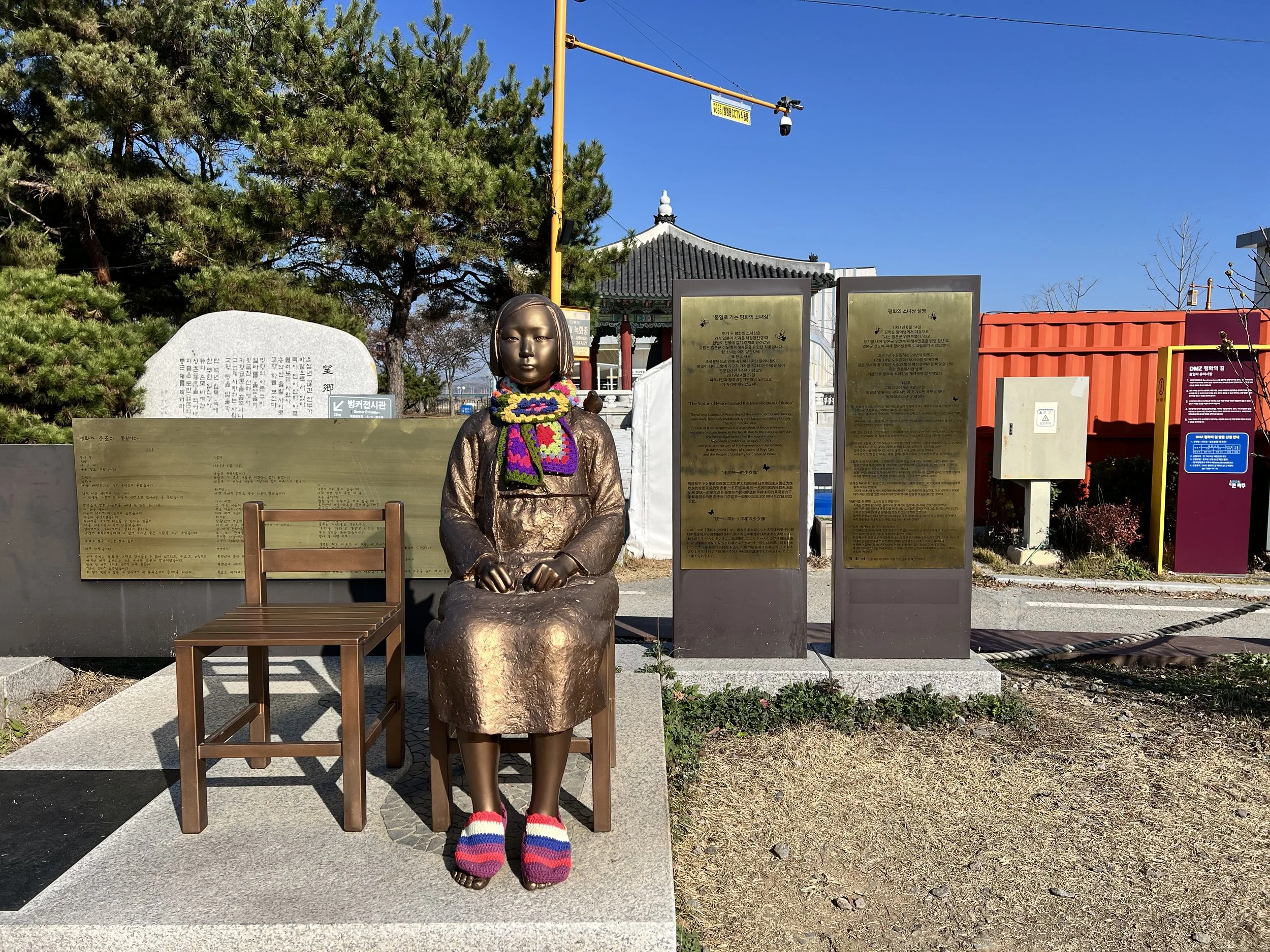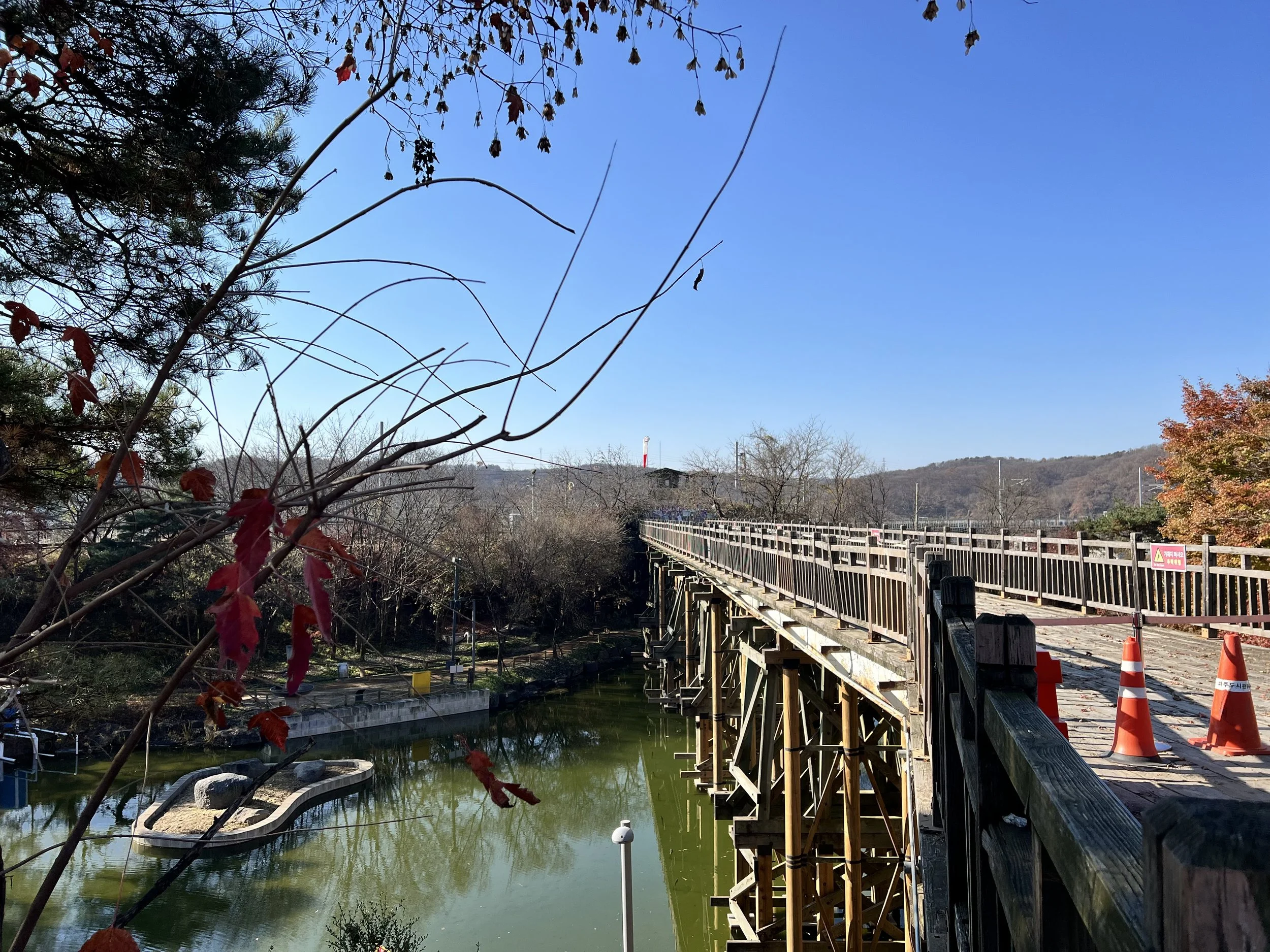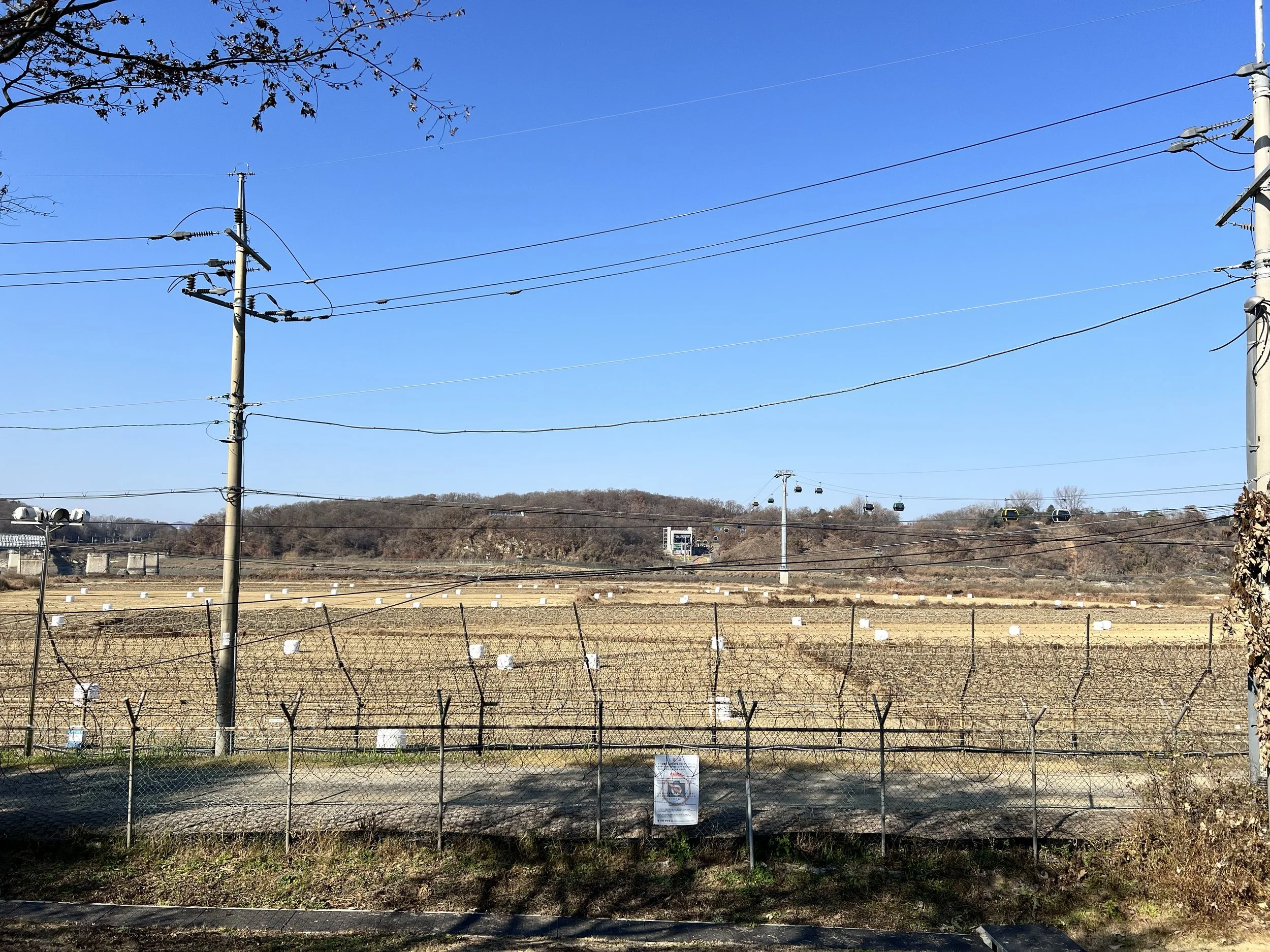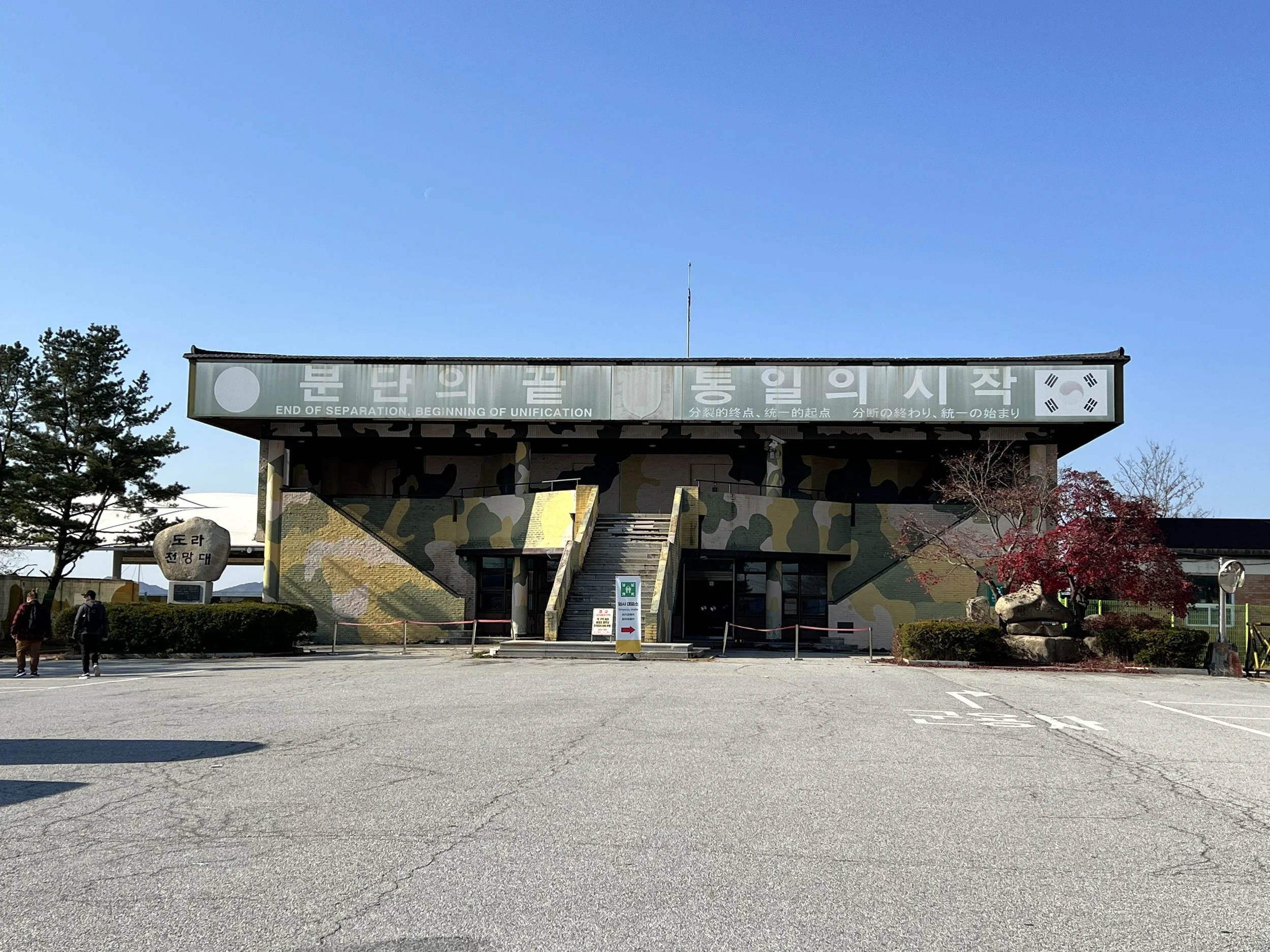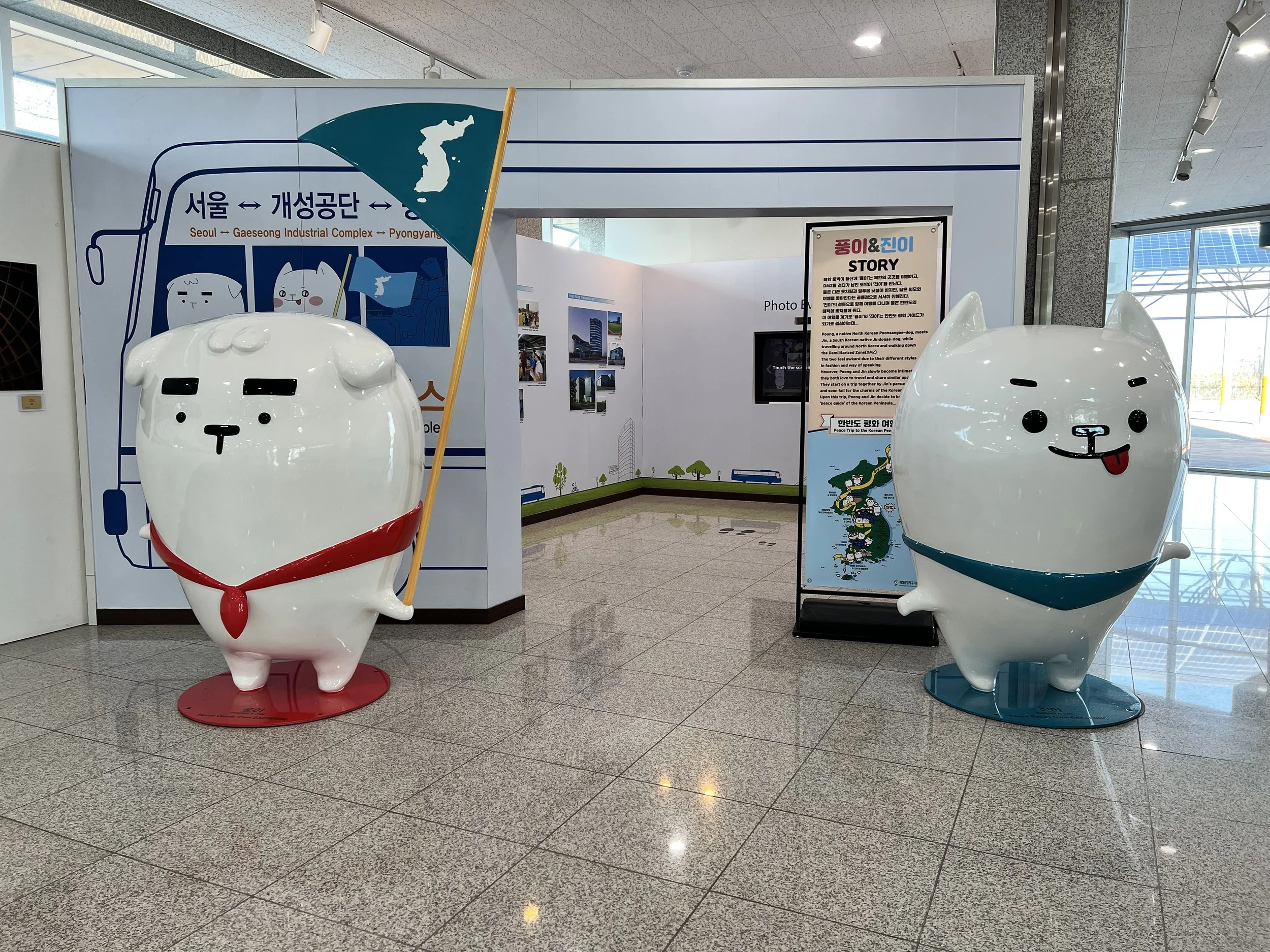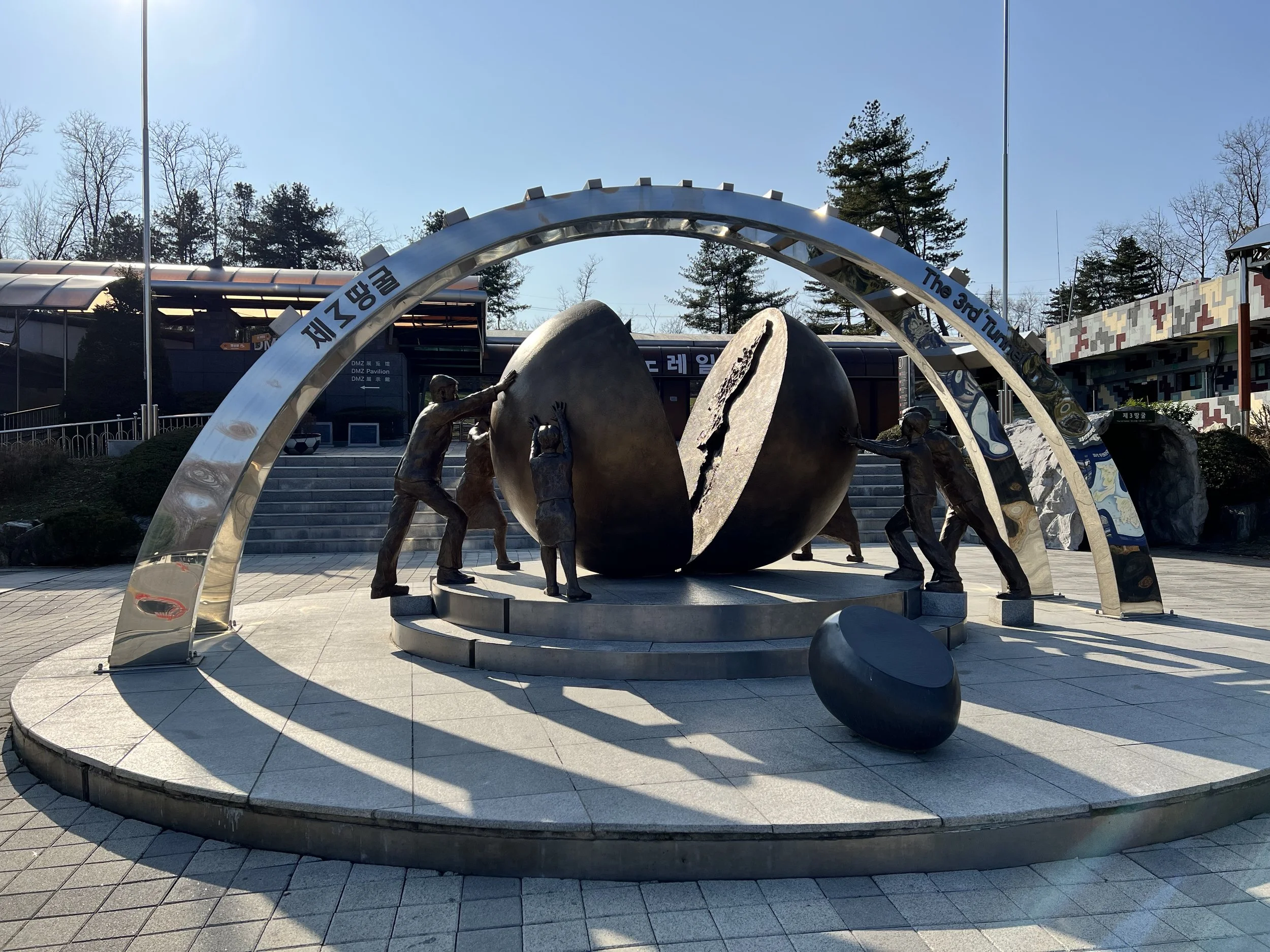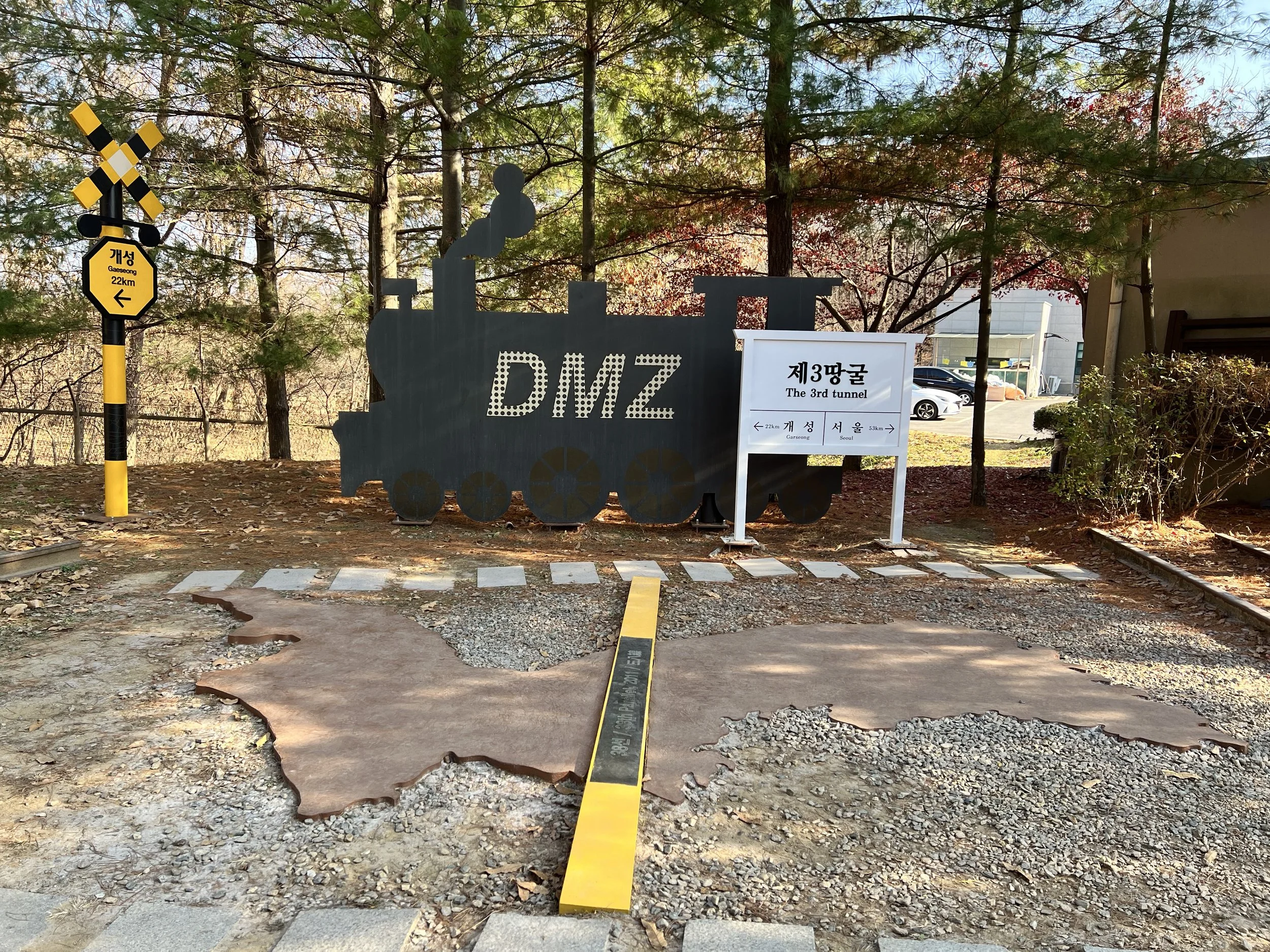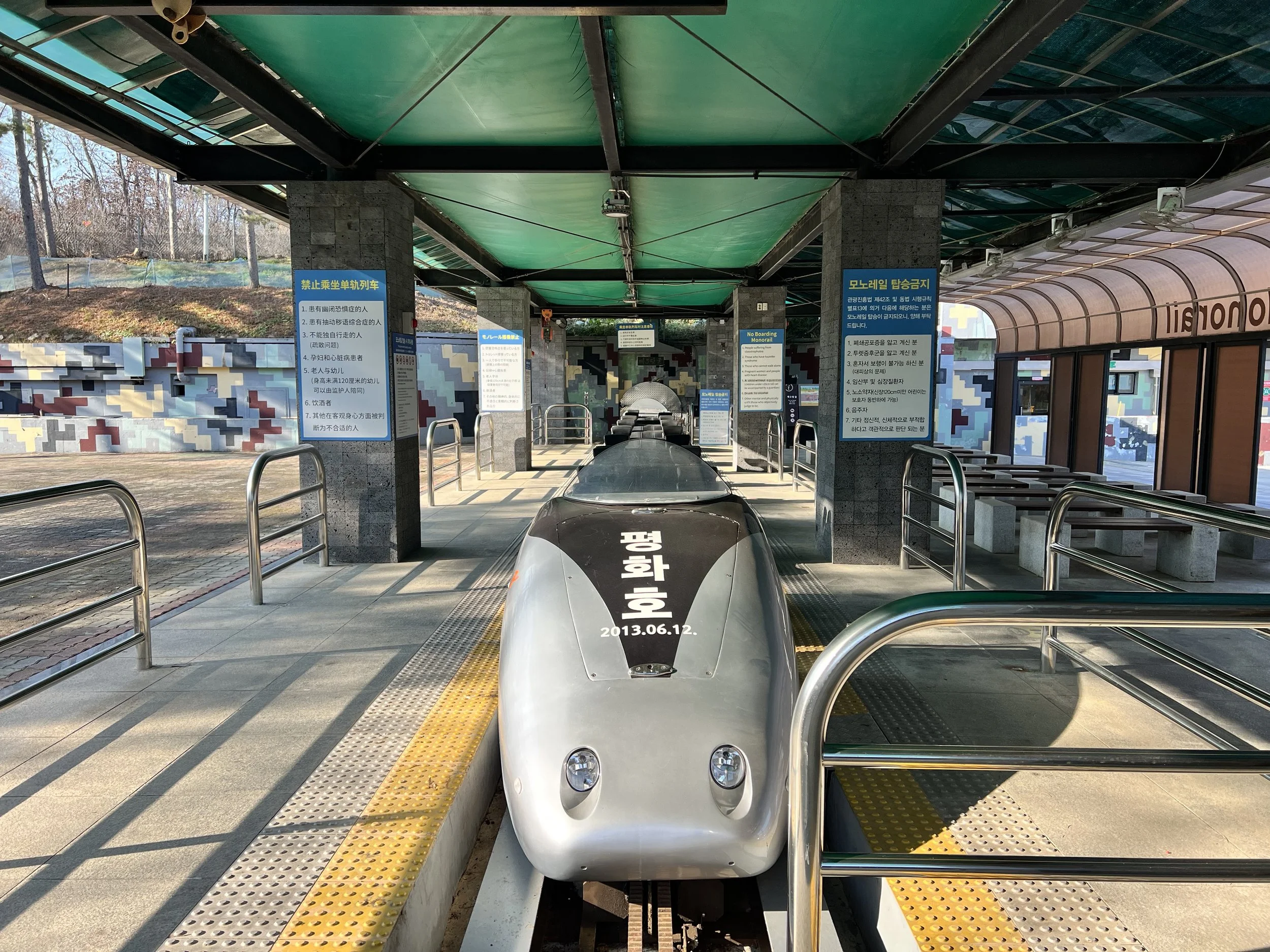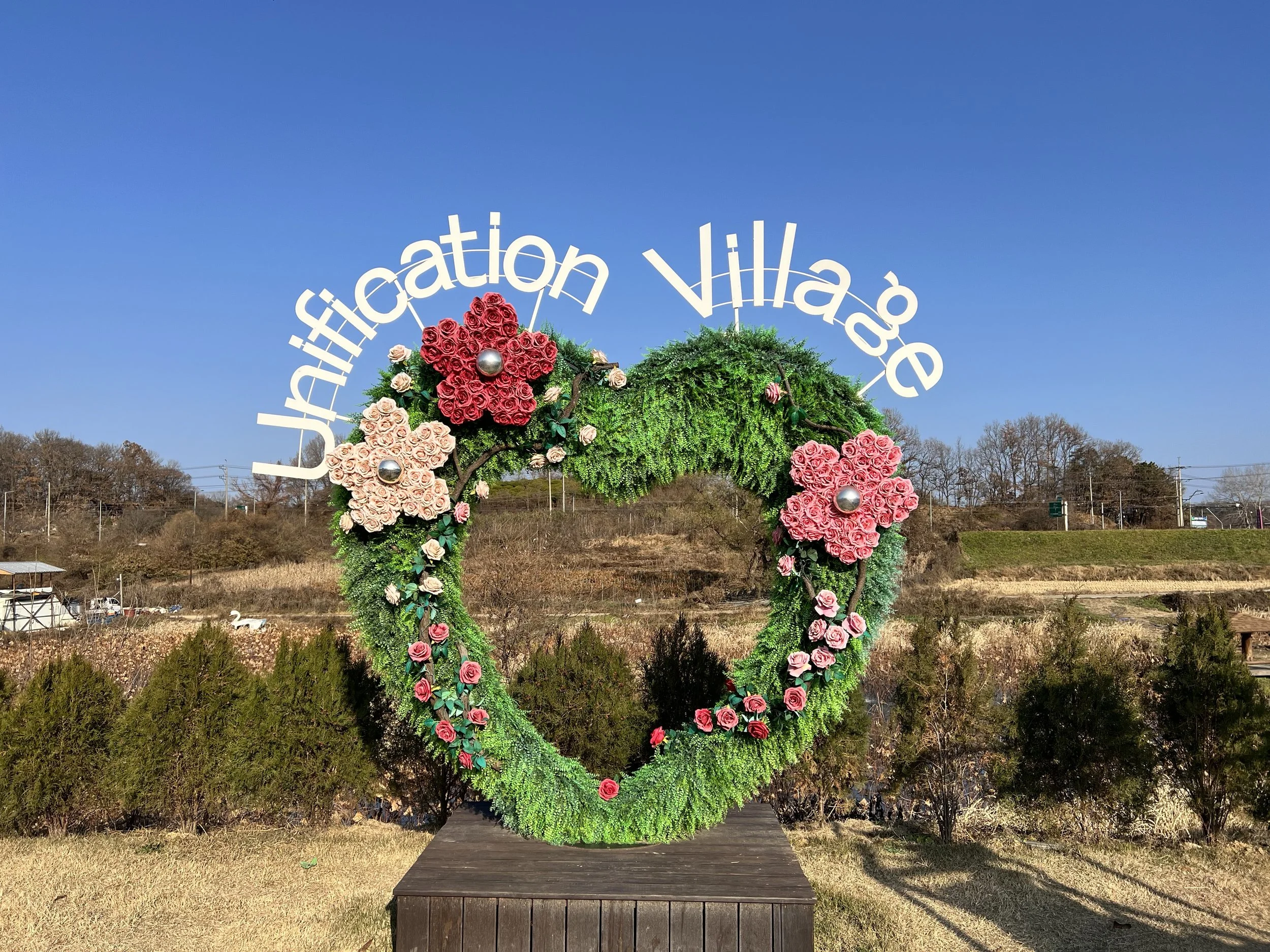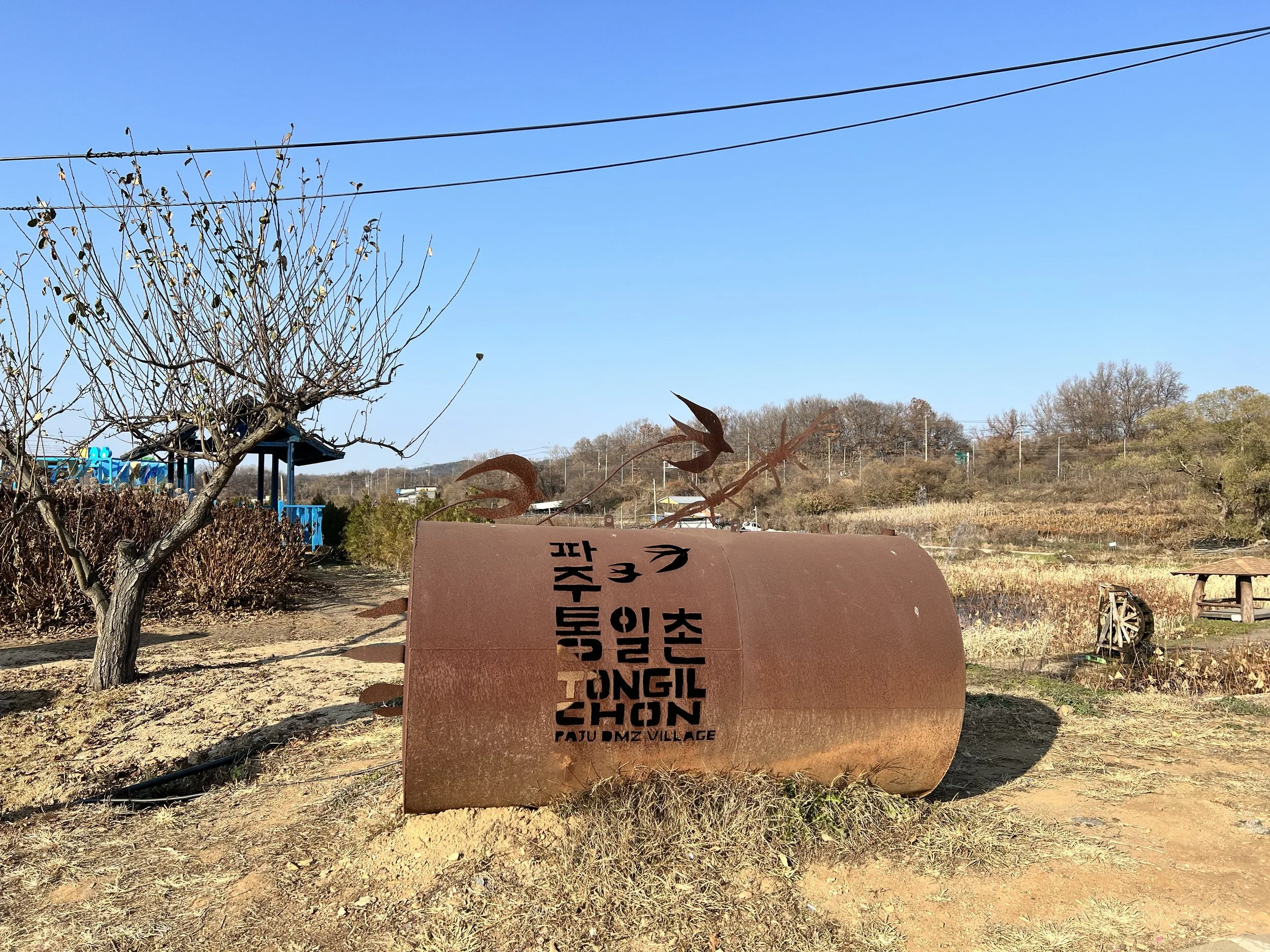DMZ Tour - South Korea
When I asked a friend for recommendations on things to do in South Korea, she told me the DMZ (Demilitarized Zone) was a must-see. It’s one of the most significant and sobering sites in the country, playing a major role in modern Korean history. Visiting the DMZ requires joining an organized tour, as access is restricted and heavily monitored by the military. There are several options, including half-day and full-day tours, some with added stops like the Majang Lake Suspension Bridge. I booked my all-day tour through Klook, a popular travel platform in Asia.
A few days before departure, the company sent detailed instructions and strict rules. The DMZ is one of the most heavily fortified borders in the world, and visitors must carry a passport for identification. We were warned repeatedly that if even one person forgot theirs, the entire bus would be denied entry.
On the morning of the tour, I arrived at Myeongdong Subway Station Exit 9, the designated meeting point. The area was bustling with groups and buses, each guide holding a clipboard of names. After checking in and confirming my passport, I was handed a name tag and boarded the bus. Once everyone was accounted for, we began our journey north toward the DMZ.
Our guide started the day with an overview of Korea’s divided history. After Japan’s surrender in 1945, the peninsula was split along the 38th parallel — the Soviet Union occupying the north and the United States the south. This division led to the creation of two governments in 1948: the Democratic People’s Republic of Korea (North Korea) and the Republic of Korea (South Korea). Tensions escalated, sparking the Korean War in 1950. Though an armistice was signed in 1953, no peace treaty followed, and the DMZ became a buffer zone that continues to separate the two nations.
Our guide also shared an unsettling story from years ago: two North Korean spies once attempted to infiltrate South Korea by posing as tourists on a DMZ tour. Their odd behaviour gave them away, and since then, soldiers have checked passports both upon entry and departure from the zone — a reminder of the ongoing tension that still exists here.
Our first stop was Majang Lake Suspension Bridge, about an hour outside Seoul. The bridge stretched elegantly across the calm water, surrounded by autumn foliage. It was a refreshing break from the intensity of the day’s theme. I walked the short trail, took photos of the lake, and stopped by a nearby café before returning to the bus.
From there, we continued to Imjingak Park, a symbolic site near the border filled with memorials and historical monuments. As we arrived, the park was alive with activity due to the Paju Jangdan Soybean Festival, held annually in autumn to celebrate the local crop. Although we didn’t have time to explore the festival itself, our guide led us through the park’s key landmarks — including the Freedom Bridge, once used for prisoner exchanges after the war, and an old train that once connected the two Koreas. The atmosphere was both lively and solemn, a mix of remembrance and hope. Nearby, I browsed a small booth selling North Korean currency — rare and expensive, but an intriguing memento.
Next, we headed deeper toward the DMZ for a visit to the Third Infiltration Tunnel. Before entering the restricted zone, soldiers boarded the bus to verify our passports against the list submitted by the tour company. Once cleared, our guide reminded us that photography was strictly prohibited except in designated areas — and to never point a camera toward the north.
The Third Tunnel was discovered in 1978 after South Korea detected underground explosions. It was later confirmed to be one of four known tunnels built by North Korea, presumably for potential invasion. Today, it’s open to visitors but remains under tight security. At the entrance, we locked away all electronic devices before descending into the narrow, dimly lit tunnel. The walk down was steep but manageable — coming back up was definitely a workout. Along the walls, drill marks where dynamite had been placed were still visible, a stark reminder of the effort behind the construction.
After resurfacing, I walked the nearby grounds, now free to take photos again. There were small monuments, gardens, and a viewing platform displaying the DMZ sign. From there, we continued to Dora Observatory, one of the most northern points civilians can access. Passing through another checkpoint, our guide informed us that tensions had recently heightened, limiting the areas we could visit. From the observatory, I could still see across the buffer zone — barren land punctuated by guard posts and barbed wire.
Our final stop was the Unification Village, a small farming area established as a symbol of hope for reconciliation. It didn’t feel much like a village — more open farmland dotted with souvenir shops and a café. I ordered a soybean latte, a local specialty tied to the region’s famous crop. It wasn’t quite what I expected — more earthy than sweet — but fitting for the day. Before boarding the bus, I bought a few small souvenirs to remember my visit.
We returned to Seoul by late afternoon, dropped off near City Hall Subway Station. It had been a full day of history, reflection, and learning. Visiting the DMZ is not just another tourist activity — it’s a chance to witness a living remnant of a divided past that continues to shape Korea today.
History & Background
The Korean Demilitarized Zone (DMZ) was established in 1953 after the Korean War armistice, creating a buffer zone roughly 250 km long and 4 km wide along the 38th parallel. It serves as a boundary between North Korea and South Korea, with military personnel from both sides stationed nearby.
Although meant as a symbol of separation, the DMZ has also become a unique ecological sanctuary, as human activity within its borders is limited. The area includes several key sites such as Imjingak Park, Dora Observatory, and the Third Infiltration Tunnel, each offering insight into the region’s turbulent history.
For many Koreans, the DMZ is more than a border — it represents loss, division, and an enduring hope for reunification.
Getting There
The DMZ is located about 50 km north of Seoul, near the city of Paju. Due to strict security regulations, independent travel is not permitted — you must join an authorized tour through an approved operator. Most tours include round-trip transportation from central Seoul, with common pickup points like Myeongdong or City Hall Subway Station.
Route Overview
Itinerary: Seoul Myeongdong Subway Station → Majang Lake Suspension Bridge → Imjingak Park → The 3rd Infiltration Tunnel → Dora Observatory → Unification Village → Seoul City Hall Subway Station
Duration: 7:30 - 16:30 (Travel time & tour)
Note: You must join an approved guided tour to visit the DMZ area. Please bring your passport, as soldiers will board the tour bus at checkpoints to verify your identity against the tour company’s submitted records. If anyone fails to present valid identification, the entire bus will be denied entry. This procedure applies both when entering and leaving the site.
Be aware that photography is only permitted in designated areas. These restrictions are strictly enforced, and violations may result in legal consequences.
Cost Breakdown
DMZ Tour: CA$80.69
Food: ₩11,000
Souvenir: ₩14,200
